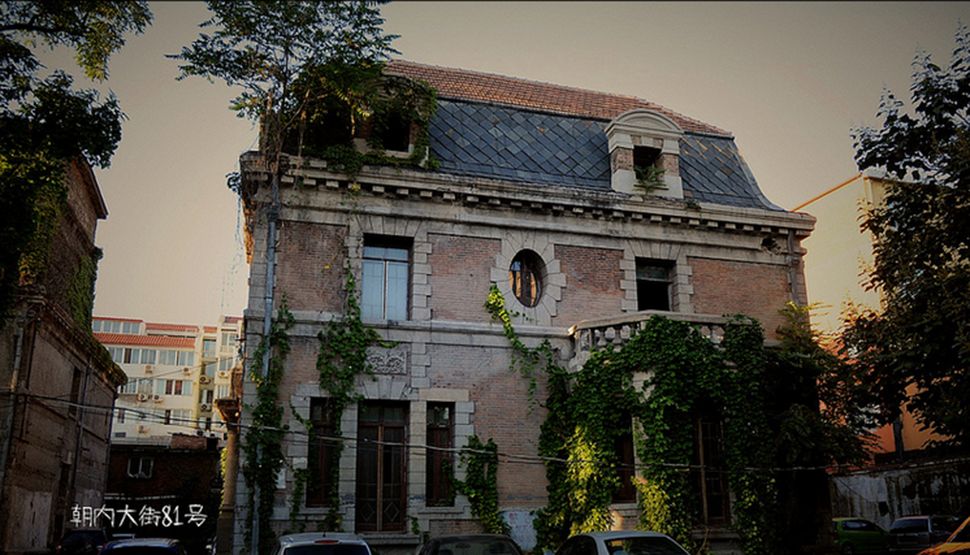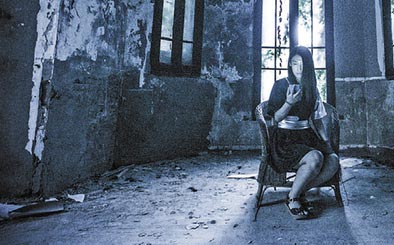
|
|||
Chaonei No. 81 - China's Haunted Ghost Mansion - Unexplained Mysteries
See more at: http://en.wikipedia.org/wiki/Chaonei_No._81
Chaonei No. 81, sometimes referred to as Chaonei Church, is a house located in the Chaoyangmen neighborhood of the Dongcheng District in Beijing, China. It is a brick structure in the French Baroque architectural style built in the early 20th century, with a larger outbuilding. The municipality of Beijing has designated it a historic building. The Chaonei No. 81 was a three-story French Baroque-style house which was built in the 1800s by Qing officials. Legend says that the house became haunted after the end of the Chinese Communist Revolution in 1949, when the wife of a Kuomintang official who once lived there committed suicide. It is believed that her spirit still haunts the house It is best known for the widespread belief that it is haunted, and it has been described as "Beijing's most celebrated 'haunted house'". Stories associated with the house include ghosts, usually of a suicidal woman, and mysterious disappearances. It has become a popular site for urban exploration by Chinese youth, especially after a popular 2014 3D horror film, The House That Never Dies, was set there. Due to incomplete historical records, there is disagreement about who built the house and for what purpose; however it is accepted that, contrary to one frequently cited legend, the house was never the property of a Kuomintang officer who left a woman, either his wife or a mistress, behind there when he fled to Taiwan in 1949. Since the establishment of the People's Republic of China (PRC) that year, records are more consistent. It was used as offices for various government agencies for most of the PRC's early years. During the Cultural Revolution, in the late 1960s, it was briefly occupied by the Red Guards; their hasty departure from the property has been cited as further evidence of the haunting. It is currently owned by the Roman Catholic Archdiocese of Beijing, which in the late 1990s raised the possibility that it might one day serve as the Vatican embassy as a reason for not demolishing it "The history is very difficult to get straight," Xu Wen, one of the property's groundskeepers, told The New York Times in 2014, as building records predating the 1949 establishment of the People's Republic of China are inconsistent or missing. Most commonly, it is believed to have been built around 1910 as the North China Union Language School, to teach Mandarin Chinese to missionaries from the West. Two decades later, it broadened its educational mandate and welcomed businessmen, diplomats and scholars to its classes, as the California College in China, part of the system that became today's Claremont Colleges. Among those who studied there was John K. Fairbank, later a Harvard professor and China Hand at the middle of the century.
After 1949, ownership and use records are available. The new Communist government took control, and used the buildings intermittently throughout the 1950s and early 1960s to house various government departments and agencies. By the time of the Cultural Revolution it had remained unused for some time, and according to a local resident it was briefly occupied by a group of Red Guards who left because they were frightened.[2] Since then it does not appear to have been used by anyone either as a residence or workplace, and fell into disrepair. In 1980, the State Administration for Religious Affairs and United Front Work Department, in conjunction with other government agencies, issued an order requiring that anyone using a property that had been used for religious purposes prior to 1949 leave it and returning all those properties to the religious organizations that had previously owned them. In the case of Chaonei No. 81, this was difficult due to the incomplete records of ownership from that time. Neglected, the house continued to deteriorate. The property was finally transferred to the CPCA in 1994 when it was able to prove the Catholic Church's past use to the government's satisfaction. By that time Beijing's real estate market was booming as reforms by Deng Xiaoping liberalized the Chinese economy, and the buildings had reached the point where they were close to being demolished. The archdiocese suggested that the complex would be ideal for use as the Vatican embassy should relations between it and China improve to the point that ambassadors were exchanged. However, the diocese did not have the resources to do the needed renovations. Between 2003 and 2005 it listed the project as one of its top priorities, but then Fu Tieshan, the CPCA secretary who had been instrumental in saving the property, died and it was put on hold. In 2009 the municipal government listed the property as historic, since it had changed very little in a century.  While the heritage listing prevented the buildings from being torn down, it also made it difficult to renovate since strict historic preservation rules have to be followed. In 2010 the diocese started the approval process again. During the preceding years legends about the old deteriorated, overgrown house in the middle of an otherwise modern, developing neighborhood being haunted spread, and local teenagers flocked to it out of curiosity. Despite the diocese's ban on entering the house due to its structural deficiencies, and graffiti warning of the haunting, many entered the house anyway, for urban exploration or just to have parties, the latter group leaving empty beer bottles and cigarette butts behind, further contributing to the house's decrepitude. In 2011, Hong Kong filmmakers Raymond Yip and Manfred Wong began what would ultimately be three years of preproduction for The House That Never Dies, a horror film set at Chaonei No. 81. While they ultimately used another house in Beijing and locations in Wuxi instead of the real property, they and their cast visited the house, and Yip reviewed 3,000 pages of data on the house in preparation for directing the film. Prior to its 2014 release, at the request of the diocese, they changed the film's Chinese title from the name of the house to Capital City No. 81) and left the number out for its English title. Wong and Yip decided to shoot the movie in 3D, the first time the 21st-century version of that technique had been used for a Chinese production. Upon release in late July, the film was a huge success, grossing CNĄ154 million (US$24.9 million) on its opening weekend, not only the best ever for a horror film in China but enough to make it the highest-grossing Chinese horror film ever. Youths who saw the film flocked to see the actual house, in some cases mere blocks from theaters showing it. As many as 500 showed up to visit on a single day; some engaging in cosplay with the house as a backdrop. The diocese decided to close the gates and allow only a few into the house at a time due to its structural issues. "Even in the 1970s, people thought the house was haunted... As children, we would play hide-and-seek in the house, but we didn't dare come in by ourselves," Li Jongyie, who grew up in one of the nearby hutong, the traditional alleyways of central Beijing, recalled to The New York Times in 2013. The Red Guards who moved into the house during the previous decade's Cultural Revolution supposedly left after a few days because they were frightened, he said. The ghost most commonly claimed to be haunting the house is that of a woman. She has been described as either the wife or lover of an officer in the National Revolutionary Army, the military arm of the Kuomintang (KMT), during the Chinese Civil War in the late 1940s. When he fled to Taiwan with his compatriots in advance of the Communist victory at the end of the war, she was left behind. Despondent, she hung herself from the rafters. Some other accounts suggest the war's outcome had nothing to do with her suicide; she was simply lonely as he was rarely home due to the war. While the archdiocese says that story is completely false, as no record has ever been found suggesting that a KMT officer lived there or owned the house, local lore has it that she can be heard screaming from the empty house during thunderstorms. However, it has also been suggested that the screaming comes from people who sneak in at night expressly to do so. 
There have also been allegations of inexplicable disappearances connected to the house. The first claims that a British priest who had built the property, supposedly to be used as a church, went missing before it was finished. Investigators sent to look for him supposedly discovered instead a secret tunnel in the crypt that led to the Dashanzi neighborhood to the northeast. In the second, three construction workers in the basement of a neighboring building got drunk on the job, and decided to break through the thin wall between where they were and No. 81. After going through it they have reportedly never been seen again. It is claimed that this incident, rather than the diocese's interest in the building, is what led the government to cancel its plans to demolish the buildings in the late 1990s. Other paranormal phenomena have been associated with the house. One claim is that anyone who walks by experiences a feeling of unease or dread while they do so.It is also said that during summers, it is always cooler in the mansion's doorway than another shaded entryway of a modern house just 20 metres (66 ft) away. The rumors and legends may have practical effects, making the property impossible to sell or lease despite the otherwise liquid real-estate market in the area. Although the diocese estimates that repairs to the house would cost at least US$1.5 million, that would be unlikely to deter buyers since similar properties nearby have been sold for several times that amount. The Chinese avoid things associated with death, sometimes avoiding the use of the number 4 just because the Chinese word for it is pronounced almost identically to the Chinese word for "death". A chalked notice next to the main entrance states, however, that there are no ghosts inside. comments powered by Disqus Submit News/Videos/Links | Discuss article | Article Link | More Unsolved and Unexplained Mysteries |
More can be addded on request. Direct your requests at vinit@theunexplainedmysteries.com
